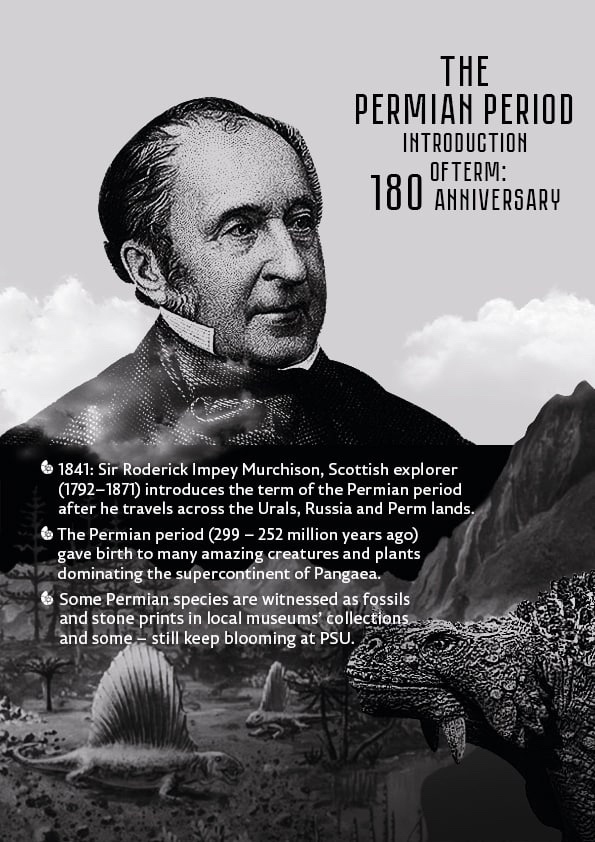180 years ago, a known Scottish explorer Sir Roderick Impey Murchison (1792–1871) introduced the term of the Permian period. What does the word Perm mean in Scandinavian? How does Perm connect with the British Empire, and its railways? Can we travel back in time to experience the Permian bloom?
In 1840-1841, Roderick Impey Murchison, accompanied by a French paleontologist Édouard de Verneuil, a German geologist Alexander Keyserling and a Russian geologist Nikolai Koksharov, Murchison made a huge journey across Russia, covering more than 20,000 km (12,400 mi).
Marking the geographical locations of Russian cities, travelling across the Perm lands, Murchison described unusual creatures and plants through their fossil remains – labeling them with Perm, or Permian period – dominating the supercontinent of Pangaea 299 – 252 million years ago.
Roderick Murchison had no intention of becoming a geologist: after he retired from a military service, he became fond of fox hunting. Throughout his both profession and hobby he learned to correlate his findings with terrestrial layers, exploring and describing their texture.
Geology as a science emerged in 19th century, at the start of the railway construction in Britain. The hills and rocks, regarded as obstacles, were torn down or cut through, revealing the hidden. Standing on a trade way to Syberia, the Urals and Perm experienced the same change, hence Murchison’s interest.
Linguists and ethnographers regard 3 main origins of the word ‘Perm’: 1). the land of Bjarma, mentioned in the Scandinavian sagas; 2). the Finnish word perämaa, i.e. “far land” (as indigenous people belong to the same Finno-Ugric language group); 3). and the local Komi-Permian word “woods, forest”.
Several international, national and particularly local museums are proud to have Permian flora and fauna exhibits in their collection, to mention the Museum of Permian Antiquities, and museums of Perm State University (PSU), serving a study ground for the Faculties of Biology, Geology and Geography.
The collection of PSU Botanical Garden includes species representing ancient taxa, widespread in the Permian period. “The dedicated ground holds living samples of ‘Permian’ plants, decorated with stone imprints of the era,” says Sergei Shumikhin, head of the Garden, associate professor of the Department of Botany and Plant Genetics, PSU.



